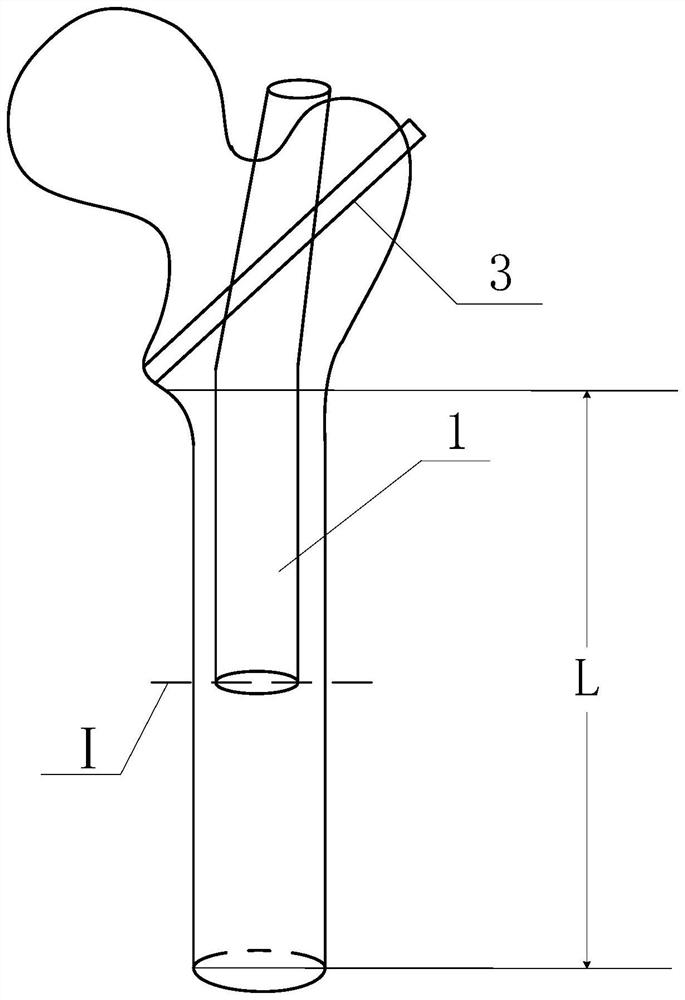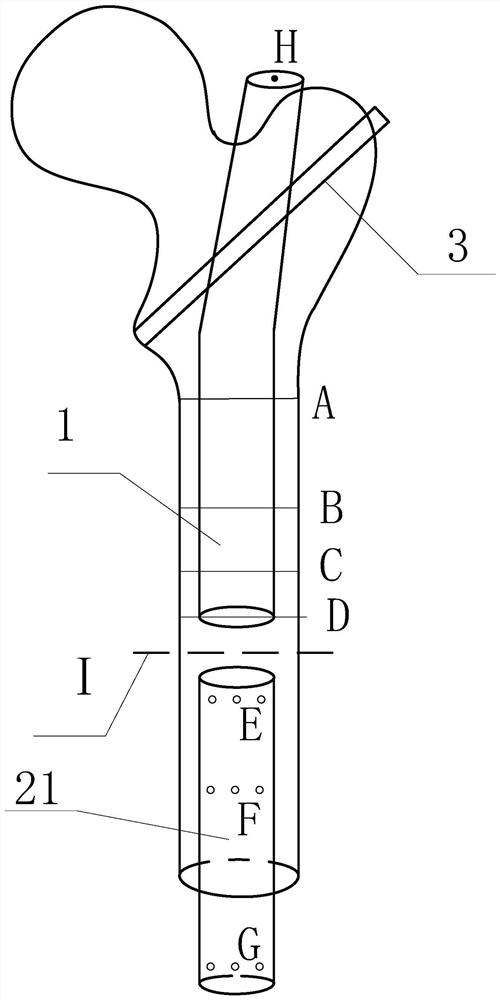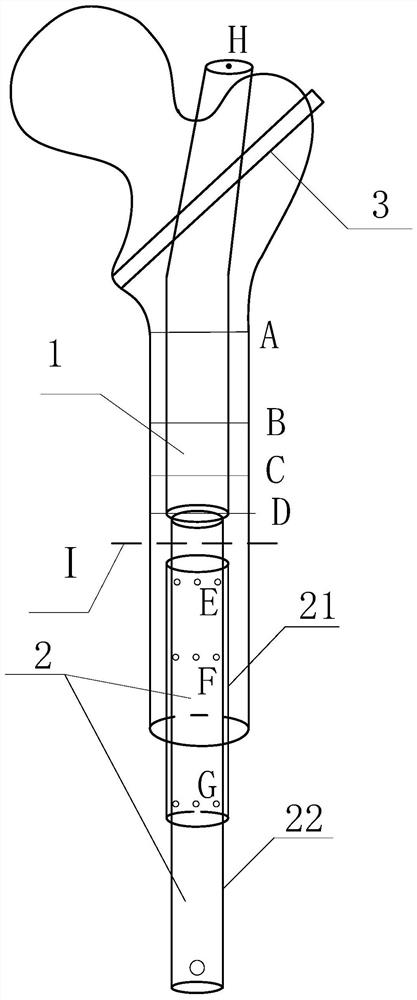Implantable prosthetic device capable of lengthening amputation stump at middle-upper section of femur
An implanted, stump technology, applied in the field of prosthetics, can solve the problems such as the interface between the receiving cavity and the residual limb is prone to odor, the residual limb receiving cavity needs to be replaced, and the load-bearing method is inconsistent, so as to avoid skin ulceration and infection, and reduce pain. and economic burden, more manageable effect
- Summary
- Abstract
- Description
- Claims
- Application Information
AI Technical Summary
Problems solved by technology
Method used
Image
Examples
Embodiment Construction
[0018] The present invention will be described in detail below in conjunction with the accompanying drawings.
[0019] An implantable prosthetic device with an extendable amputation stump in the middle and upper part of the femur, comprising a first intraosseous implant part 1 and a second intraosseous implant part 2; the second intraosseous implant part 2 is telescopic, and the second intraosseous implant part 2 The intraosseous implant part 2 includes a traction section and a driving section. In use state: the first intraosseous implant part 1 passes through the apex of the greater trochanter of the femur and extends to the femoral segment, and the lower part of the second intraosseous implant part 2 is provided with screws , the second intraosseous implant part 1 passes through the femur, the distraction segment is fixed to the femur, the driving segment is slidably connected to the distraction segment, the upper end of the driving segment is against the first intraosseous i...
PUM
| Property | Measurement | Unit |
|---|---|---|
| Length | aaaaa | aaaaa |
Abstract
Description
Claims
Application Information
 Login to View More
Login to View More - R&D
- Intellectual Property
- Life Sciences
- Materials
- Tech Scout
- Unparalleled Data Quality
- Higher Quality Content
- 60% Fewer Hallucinations
Browse by: Latest US Patents, China's latest patents, Technical Efficacy Thesaurus, Application Domain, Technology Topic, Popular Technical Reports.
© 2025 PatSnap. All rights reserved.Legal|Privacy policy|Modern Slavery Act Transparency Statement|Sitemap|About US| Contact US: help@patsnap.com



